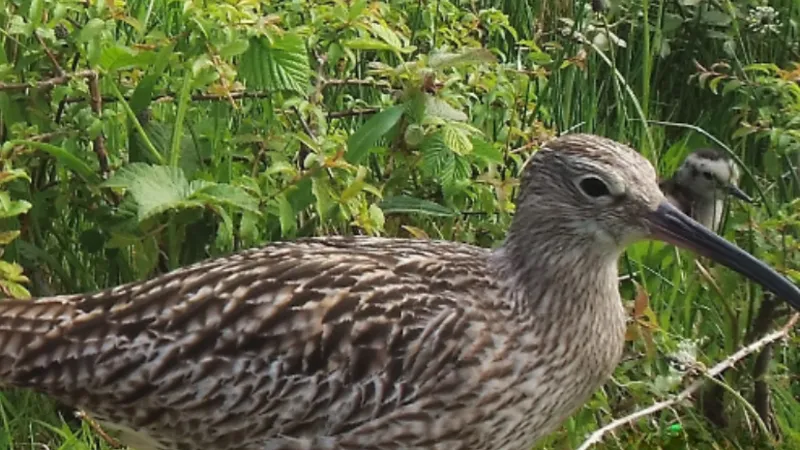The call of the curlew returns to Fermanagh island
The warbling call of the curlew has returned to Trasna Island in Lower Lough Erne.

Conservationists are celebrating the first successful breeding birds on the island in living memory.
RSPB (NI) manages several islands in Lough Erne and has its nature reserve on the Lower Lough.
It acquired Trasna Island in 2017 and since then has worked with the Lough Erne Landscape Partnership to restore habitat to support the return of vulnerable species including the curlew, along with the lapwing, snipe and redshank.
Headshot of Amy Burns smiling into the camera. She is wearing a life-jacket. In the background a body of water and beyond that a grassy hill.
Amy Burns said that the curlews are "very secretive in their behaviour"
More than 80% of curlew have been lost since the 1980s, so to see chicks on a newly-restored island has been "just fantastic" for RSPB ranger Amy Burns.
But much about the elusive curlew is still a mystery.
"The more questions that you think you've got answered, the more questions they'll pose to you," she said.
"They're very secretive in their behaviour, so it can be very difficult to establish nesting sites and figure out what they're actually doing some years."
Lapwing chicks are also living on Trasna Island
What Amy and the RSPB team do know is that the female left the island around four weeks after the chicks hatched, which is typical for the species.
That left the male in charge of protecting the brood in the nest on the ground for another 1-2 weeks, until they're ready to take off.
He will maintain a vigilant watch, soaring overhead to scan for any danger, including us coming onto the island.
"You can hear the male bird 'yakking'," Amy explained.
"So it's a call specific to the fact that it's got brood on the ground and it's communicating with those chicks to say, 'there's danger present, so you either need to hide or if you're capable of flying, take off and try and avoid that danger'," she added.
"They're incredible birds in the way they communicate with the young and the young respond back, although we can't hear them."
The return of such a depleted species highlights the effectiveness of practical conservation management, such as clearing woodland and creating the open grassland on the foreshore that will attract breeding waders.
There are hopes that the bird will return to the island for breeding next year
In the early twentieth century Trasna Island had an open, farmed landscape which was ideal for breeding curlews.
Highland cows have been used during winter to manage growth, with as little intervention as possible by humans to give any birds the best chance.
By now, the curlew have departed the lough for their next stage, but hopes are high that this is the start of a new dynasty for the species in Fermanagh.
"We put in about 10 weeks' worth of work this time of year," said Amy.
"So when the curlew first return to site, by the time they pair up and lay eggs, they hatch and then they come up to fledging stage - when the chicks are capable of flying basically - they'll head off from here, hopefully out west onto the coast and then down south for the winter.
"We're hoping that they make it through the winter and they'll join us again in the spring next year."
-bbc







